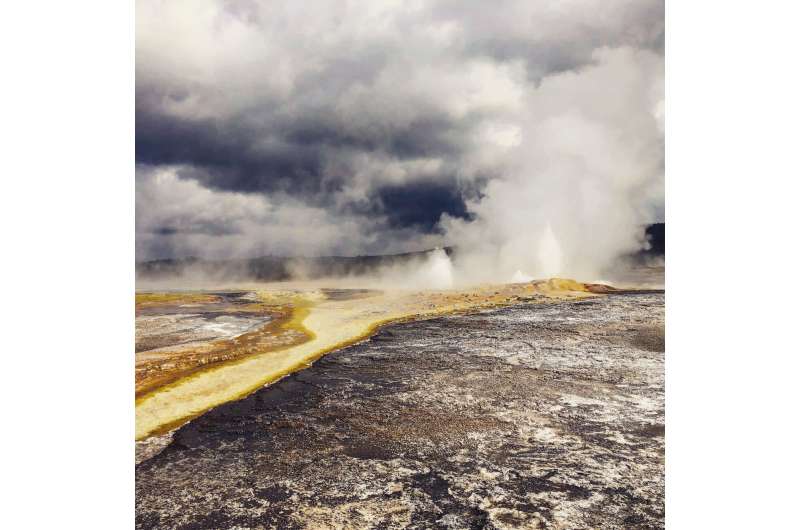Study may explain the source of nitrogen in Earth's atmosphere

Nitrogen makes up approximately 78% of the air we breathe. But scientists have never fully understood how it came to be present in the atmospheres around Earth and other planets.
Along with carbon, hydrogen and sulfur—other elements that are essential for life—nitrogen is a volatile element, meaning that its molecules convert from liquid to gas at a low temperature. And because of the extreme high temperatures that existed when the planets were formed, the thinking goes, nitrogen and its volatile companions should have been lost during that process.
New research by UCLA scientists may help solve the question of whether our atmosphere was formed by gases naturally emitted by the Earth's interior—through events like volcanic eruptions, for example—or was added later, perhaps due to comets colliding into the Earth soon after it formed.
The study, by Edward Young, a professor of earth, planetary, and space sciences, and Jabrane Labidi, a UCLA postdoctoral fellow, was published in the journal Nature. Their work provides a strong argument for the second scenario.
"If nitrogen was added after the Earth was mostly constructed, then nitrogen deep in the Earth would have to have started in the atmosphere, being dragged down by geological and geochemical processes like weathering of rock," Young said.
Answering questions about how our planet works and about the sources of the elements that support life gives scientists a better understanding of how common the circumstances may be that create habitable planets.
To gather a broad sampling of volcanic gases, the two UCLA scientists collaborated with geochemists in Canada, France, Iceland and Italy, in addition to scientists at Woods Hole Oceanographic Institute in Massachusetts and the University of New Mexico. The team compared the composition of nitrogen molecules from deep inside the Earth with nitrogen without any contamination from air from crushed samples of ocean floor.

"We discovered that a lot of nitrogen coming out of the volcanic systems as nitrogen molecules is actually composed of nitrogen molecules from air," said Labidi, the paper's first author. "Basically, air is contaminating the volcanic gases."
The study relied on a method for analyzing nitrogen that Young and colleagues developed at UCLA in 2017. The technique enabled them to mathematically "remove" the contaminating air from the gases and determine the true gas composition of nitrogen deep within Earth's mantle. That led them to conclude that nitrogen in the mantle has most likely been there from the beginning of our planet.
Prior to the study, scientists had not been able to distinguish how much nitrogen from air was in volcanic emissions versus how much nitrogen came from the Earth's mantle.
The approach could also eventually be used as a way to monitor the activity of volcanos. Because the composition of gases bellowing from volcanic centers changes prior to eruptions, analyzing the mix of mantle and air nitrogen could one day help determine in advance when an eruption is about to occur.
"Understanding the fundamentals of our world origin's is my main driver," Labidi said. "One of our goals now will be to understand better how much nitrogen comes up through volcanos or whether nitrogen is sent further down into the earth. This will ultimately narrow down the origin of our atmosphere."
More information: Hydrothermal 15N15N abundances constrain the origins of mantle nitrogen, Nature (2020). DOI: 10.1038/s41586-020-2173-4 , nature.com/articles/s41586-020-2173-4 -020-2173-4
Journal information: Nature
Provided by University of California, Los Angeles




















